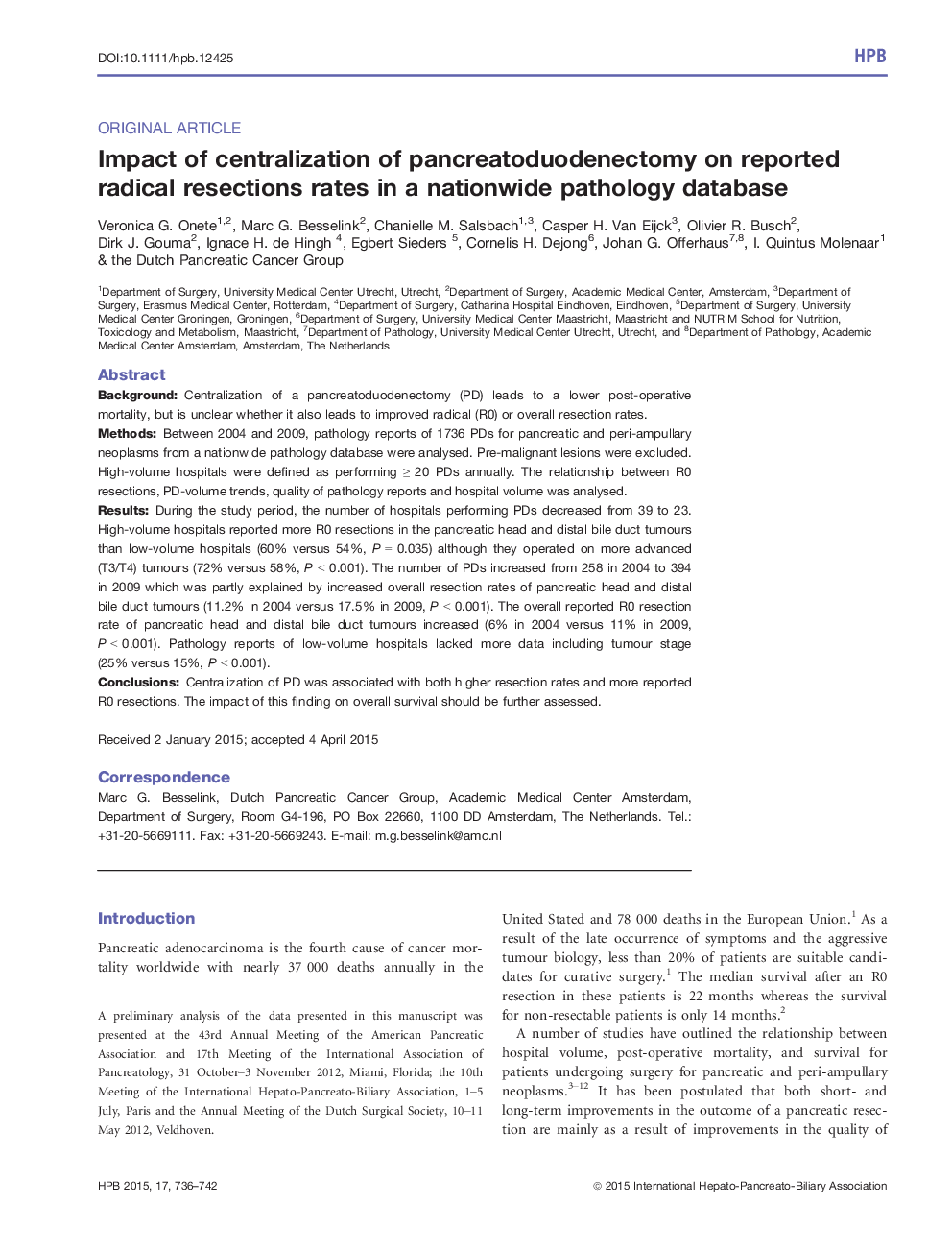| Article ID | Journal | Published Year | Pages | File Type |
|---|---|---|---|---|
| 3268542 | HPB | 2015 | 7 Pages |
BackgroundCentralization of a pancreatoduodenectomy (PD) leads to a lower post-operative mortality, but is unclear whether it also leads to improved radical (R0) or overall resection rates.MethodsBetween 2004 and 2009, pathology reports of 1736 PDs for pancreatic and peri-ampullary neoplasms from a nationwide pathology database were analysed. Pre-malignant lesions were excluded. High-volume hospitals were defined as performing ≥ 20 PDs annually. The relationship between R0 resections, PD-volume trends, quality of pathology reports and hospital volume was analysed.ResultsDuring the study period, the number of hospitals performing PDs decreased from 39 to 23. High-volume hospitals reported more R0 resections in the pancreatic head and distal bile duct tumours than low-volume hospitals (60% versus 54%, P=0.035) although they operated on more advanced (T3/T4) tumours (72% versus 58%, P < 0.001). The number of PDs increased from 258 in 2004 to 394 in 2009 which was partly explained by increased overall resection rates of pancreatic head and distal bile duct tumours (11.2% in 2004 versus 17.5% in 2009, P < 0.001). The overall reported R0 resection rate of pancreatic head and distal bile duct tumours increased (6% in 2004 versus 11% in 2009, P < 0.001). Pathology reports of low-volume hospitals lacked more data including tumour stage (25% versus 15%, P < 0.001).ConclusionsCentralization of PD was associated with both higher resection rates and more reported R0 resections. The impact of this finding on overall survival should be further assessed.
